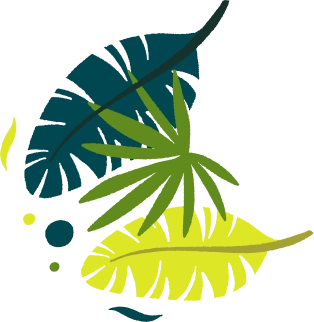


Ha Giang and Sapa are two highland jewels connected by about 240-253 km of winding mountain roads.
This guide covers all transport options (bus, private car, motorbike), costs and duration, plus road conditions, weather tips, hidden gems (Hoang Su Phi, Bac Ha market, O Quy Ho Pass, etc.), local food specialties, and practical logistics (fees, opening hours, gas, etc.).
Many people when doing a Vietnam trip first complete the Ha Giang loop and then travel northwards.
Bus (coach/limousine) - The most budget-friendly way. Direct buses from Ha Giang to Sapa run several times daily. They usually take 6-7 hours including breaks. Bus tickets cost roughly 270,000-500,000 VND (≈$12-20) per person. Operators like Techbus, Quang Nghi, and Quang Tuyen are common.
Daytime “limousine” buses run from morning to afternoon; overnight sleeper coaches also exist but arrival can be late night. Buses typically stop for food and rest breaks along the way. To book, local travel agents or your hostel in Ha Giang can help, or use 12Go Asia.
Tip: Sit facing forward, buckle up, and bring earplugs - buses can be bumpy and noisy. Also double-check your pick-up and drop-off points (mountain town bus stops aren’t always at your hotel).
Private Car/Van - For comfort and flexibility, hire a private car (with driver) from Ha Giang to Sapa. A private transfer (van or car) costs on the order of 3.2 - 4 million VND (~$130-150) one-way and takes about 5 hours if you avoid long stops. This option lets you set the schedule and pull over anywhere for photos. It’s ideal for families or groups with luggage.
Many travelers book this through tour operators (Viator, GetYourGuide, or a local agency).
Note: Mountain roads are narrow and winding, so an experienced driver is recommended.
Motorbike - For adventurous solo travelers with motorbike experience, riding is thrilling but challenging. The full trip is roughly 6-8 hours of riding (depending on pace and breaks).
You’ll often take routes via provincial roads (for example, via Viet Quang, QL2, QL279, QL70), which are steep and twisty. Rental & fuel: Bikes rent 200,000-300,000 VND/day ($8-13), plus fuel (~30,000 VND/liter) - roughly 10-12 liters for the full trip (~300k-350k VND in gas).
You’ll need a solid off-road bike (like a Honda Win 150 or Honda XR) and gear. Importantly, foreign licenses (even with an IDP) are not recognized in Vietnam, so riding is at your own risk. Take it slow, check weather, wear a helmet, and maybe split it into two days if you want to ride leisurely through Hoang Su Phi and Bac Ha. (If you’re not a confident rider, the bus or car is safer - see road warnings below.)
Other Options - There’s no train on this route. You could also go back via Hanoi or Cao Bang but that’s a big detour. In practice, it's a bus, car, or motorbike. Some travelers do a backtracking tour: e.g. Ha Giang→Bac Ha town (by local shuttle), then Bac Ha→Sapa. (Bac Ha’s only 30 km east of the main Ha Giang-Sapa road.)
No visa/permit needed for domestic travel, just ensure your transport is booked or arranged in advance.
The Ha Giang→Sapa road is short on large tourist attractions but big on “experiences.” Plan to stop often - for vistas, markets, or homestays. Highlights include:
Hoang Su Phi Rice Terraces (Ha Giang province) - Just a few hours south of Ha Giang City, this area has some of Vietnam’s highest-altitude rice fields. The patchwork terraces and Dao/Nung minority villages around Nam Hong or Thong Nguyen are breathtaking, especially in harvest season (Sept-Oct).
Tip: Sunrise is magical here. If you have time, spend an extra night in a local homestay in Hoang Su Phi (pros: incredible sunrise scenes; cons: basic lodging).
4
Bac Ha Town & Sunday Market - On Sundays, the mountain comes alive with the Bac Ha Sunday Market, one of Vietnam’s most colorful hill tribe markets. Thousands of Hmong, Dao, Tay, and others gather in bright costumes to trade livestock, textiles (including bạc ha Mong batik), and food. (This market is just west of our route; detour ~45 min north of Hoang Su Phi via DT177/QL279.) If your trip hits a Sunday, don’t miss it.
Tip: Go early (market peaks 6-10am). Off-Sunday: Visit the nearby Hoang A Tuong Palace (the old “King of Hmong” mansion) - a bright yellow French-Vietnamese villa open 8am-5pm, and stroll Ban Pho village to meet local Hmong artisans. (Palace entry fee is small or donation; bring cash.)
O Quy Ho Pass (Pass of the Kho Muoi) - One of Vietnam’s highest paved passes, cresting around 2,000 m. On the Sapa side, stop here in the late afternoon for sunset. The sky alights over towering karsts - epic photo op.
The pass is free and always open, but once the sun drops it can cool rapidly. (Bring a light jacket - even in summer.)
Fansipan (Sapa) - As you descend into Sapa valley, the rice terraces of Muong Hoa Valley come into view. From Sapa town head to Lao Chai/Ta Van villages for scenic hiking (4-5 hours trek) among rice fields and Dzay hamlets.
The rustic villages of Lao Chai and Tả Van (home to Hmong and Dzay people) offer homestays; consider booking one night there for an authentic experience. These villages also have thatched herbal saunas (Dao thuốc ngải) if you want to unwind with a local herbal bath.
Local Food Stops - Northern Vietnam cuisine is unique. Along the way, sample specialties: in Ha Giang, Banh Tam Giac Mạch (steamed buckwheat cakes) and Chao Au Tau (a spicy herbal root porridge) warm you on cool mornings.
At Bac Ha market or Hoang Su Phi homestays try Thang Co (horse-meat stew) for the bravely adventurous.
In Sapa, don’t miss hearty Salmon Hot Pot (thanks to highland trout farms) and Cơm Lam (bamboo sticky rice). Street stalls in Sapa town offer bánh hạt dẻ (sweet chestnut cakes) and “dry” pho (phở sủi) - Vietnamese noodles without broth. Fuel up - literally (gas) and figuratively (food) - at stops like Xin Man, Bac Ha, or Ban Pho Village.
Cultural Encounters - Along this route you’ll meet Hmong, Dao, Tay, Nung, and other ethnic communities. Friendly homestay families may invite you into their stilt houses or kitchens.
Etiquette: Ask before photographing people (a smile and “Xin chào!” goes a long way). Respect local customs: many highland meals are shared communally (try the sticky rice by hand) and markets have unspoken rules.
Showing interest in local textiles or languages (e.g. learning to say “thank you” - cảm ơn in Vietnamese) enriches the experience.
Traveling this far north means unpredictable conditions. A few tips to stay safe and comfortable:
Road Conditions: The highway between Ha Giang and Sapa is paved but narrow, steep and winding. Expect hairpin turns and occasional mudslides or potholes. On rainy days, visibility can drop in fog or mist.
Always drive defensively: keep speed low on curves, use a seatbelt or motorcycle lights, and honk lightly before blind corners (locals do). If on a bus, sit toward the middle (away from the toilet and wheels).
Never rush - a 5-hour drive can easily become 7 hours in bad weather.
Weather: Northern Vietnam has four seasons.
Best time: Spring (March-May) or Autumn (Sept-Nov). Then skies are clear, days are warm, and night air is cool.
September-October is especially lovely for rice harvest gold in the fields.
Winter (Dec-Feb): chilly (especially at altitude), pack layers and a good jacket; snow is rare but cold fog and frost can hit Sapa.
Summer (Jun-Aug): hot and humid in lower stretches; monsoon rains can cause landslides or wash out side roads (exercise extra caution on a bike). Check the 7-day weather forecast and avoid travel during forecasted heavy storms or fog.
Driving/Riding Safety: If riding a motorbike, wear full protective gear - helmet (required by law), rain gear, gloves, and sturdy shoes. Ensure your bike’s brakes and lights are in top shape (the descent to Sapa is a long downhill!). Foreign travel insurance that covers medical evacuation is strongly recommended in case of accidents.
Local guide: If you rent a motorbike in Ha Giang, insist on a reputable shop and a bike in excellent condition. Consider hiring a local guide for the loop; many travelers have noted that local drivers and guides greatly reduce stress. For bus/car riders, don’t be shy to ask drivers to stop if you’re too cold or need a rest.
Miscellaneous Tips: Cash is king. Many small villages and eateries won’t take cards. ATMs exist in Ha Giang and Sapa, but carry extra cash for remote stretches.
Phone/internet: Service is spotty in the mountains; download maps offline or get a local SIM with data.
Stay charged: Bring a power bank - charging outlets can be scarce on long rides. Hydrate and snack - altitude and motion can sap energy. Layers are key: you might leave Ha Giang in a T-shirt in the morning and arrive in foggy Sapa shivering at night.
Fares & Fees: As noted, bus tickets cost ~300-500k VND. Private cars cost ~ 3.2-4 million VND. Motorbike rental ~200k/day, plus ~350k in fuel. There are no official “travel permits” needed on this domestic route. Attractions like Bac Ha Market and O Quy Ho Pass are free to visit.
Hoang A Tuong Palace has a very small entrance fee (≈10,000 VND) but operating hours are fixed (8am-5pm). Tribal villages generally have no fee - just be respectful.
Booking & Schedules: Book your bus or car a day ahead, especially on weekends or holiday peaks. Use apps like 12Go, Baolau, or local agents. Buses leave Ha Giang roughly every hour from 6:30am to 8pm, arriving in Sapa by early afternoon (or late evening for night buses).
Keep your pickup addresses (or station names) handy - some companies only pick up at designated offices. If traveling by motorbike, check in with your hotel/hostel staff; they often know good rental shops and will register your information for safety.
Gas & Supplies: Fuel up in Ha Giang or Bac Ha (large markets) before you depart; gas stations are infrequent. Fuel costs about 30,000 VND/liter (Oct 2024 rates). Snacks and water can be bought in town before leaving - along the road there are a few small stalls but choices are limited.
A toilet break is easy on buses (they stop by cafes), but if riding, plan stops at bigger towns (Xin Man, Bac Ha) - local shophouse cafés usually have simple restrooms (cost ~5,000 VND).
Luggage: On buses there are overhead shelves and a small luggage hold. Keep valuables with you and use a padlock on any big bags.
On a motorbike, strap everything securely and carry minimal gear (bigger backpacks can upset bike balance).
Accommodation: You’ll want at least one overnight either at Ha Giang or Bac Ha before heading on. Bac Ha town and Lao Cai (en route) have decent guesthouses and some homestays.
Sapa offers everything from dorms to boutique hotels. If you’re doing the trek into Muong Hoa Valley, consider one night in a Ta Van homestay (book in advance if peak season).
Q: How long does the Ha Giang-Sapa trip take and cost?
A: About 6-7 hours one-way by bus or car. Day buses run Ha Giang→Sapa for 300,000-500,000 VND per ticket. A private car hire (with driver) costs roughly 3.2-4.0 million VND ($130-150) one-way.
Motorbike riding is about the same time (maybe 6-8h if you break in between), with rental at ~200,000 VND/day plus ~350,000 VND fuel.
Q: Is the road safe for motorbikes or driving?
A: The mountain road is narrow and winding. It’s safe if you’re experienced and cautious. For drivers, keep speeds low in corners and be alert for oncoming vehicles. For motorcyclists, wear full gear and take breaks.
Note that foreign licenses are not recognized here (an IDP alone isn’t enough), so rentals carry risk. Many travelers hire local drivers for motorbikes or join guided tours. In any case, check the weather before leaving (rain/fog make it tougher) and carry a basic first-aid kit.
Q: What are must-see stops along the way?
A: If you have time, detour to Hoang Su Phi (terraced fields, especially golden at harvest). Schedule your trip to catch the Bac Ha Sunday Market (vibrant tribal market) if it lines up. Even outside Sunday, Bac Ha town’s Hoang A Tuong Palace (opens 8am-5pm) is worth a quick visit.
In Sapa, drive up to O Quy Ho Pass at sunset for sweeping views. And don’t miss a trek in Muong Hoa Valley (Lao Chai/Ta Van villages) to see terraced farms and meet locals.
Q: When is the best time of year for this trip?
A: March-May (spring) and September-November (autumn) are ideal. The weather is clear and cool, with lush green (spring) or golden rice fields (autumn). Winters (Dec-Feb) can be cold (below 0°C at night), and summers (Jun-Aug) are hot and can have heavy rains. Typhoon season (July-September) may disrupt travel, so check forecasts.
Q: How do I book tickets or tours?
A: Buses and car transfers can be booked through 12Go Asia or local Vietnamese booking sites. Hotels/hostels in Ha Giang often sell bus tickets (at small commission). Always reconfirm times the day before.
For private cars, use platforms like Viator/GetYourGuide or ask a reputable travel agency in Hanoi/Hagiang. You can also join organized tours (e.g., motorbike loop tours or guided Ha Giang to Sapa tours) if you prefer everything arranged.
Q: Do I need a permit or anything special to travel this route?
A: No special permit is needed to drive or ride from Ha Giang to Sapa - it’s all within Vietnam. Just carry your passport. The only “permit” issue is motorbike licensing: since foreign licenses aren’t valid, riding is at your own risk. Always ensure your vehicle rental is officially documented.
Q: What should I pack for the journey?
A: Layers (it can swing from warm sun to chilly mountain air). Rain jacket or poncho (sudden showers happen). Good walking shoes or boots for any side hikes. A scarf or face mask is handy on dusty roads. Bring a power bank, sunglasses, and a hat. Don’t forget motion sickness pills if you’re prone (bus roads are twisty). Also cash (VND) - many small villages don’t take cards.
Q: Is there internet/phone coverage on the way?
A: Coverage is spotty outside towns. Viettel (the main carrier) usually works in bigger towns (Ha Giang, Bac Ha, Sapa). Once you’re on the high passes or in smaller villages, expect no service. Download offline maps and keep loved ones updated via SMS or call when you have a signal.
Each traveler’s experience is unique, but with good planning you’ll find the Ha Giang→Sapa trip to be an unforgettable highlight of a North Vietnam itinerary. Enjoy the ride, keep an open mind, and you’ll leave with stunning photos and even more stunning memories!
Get the latest information about our tours and special offers!